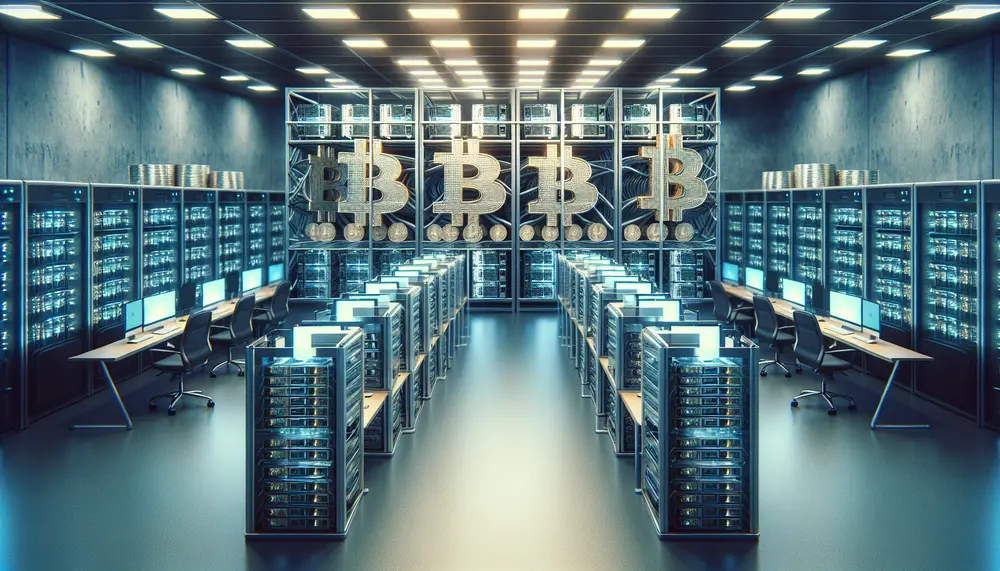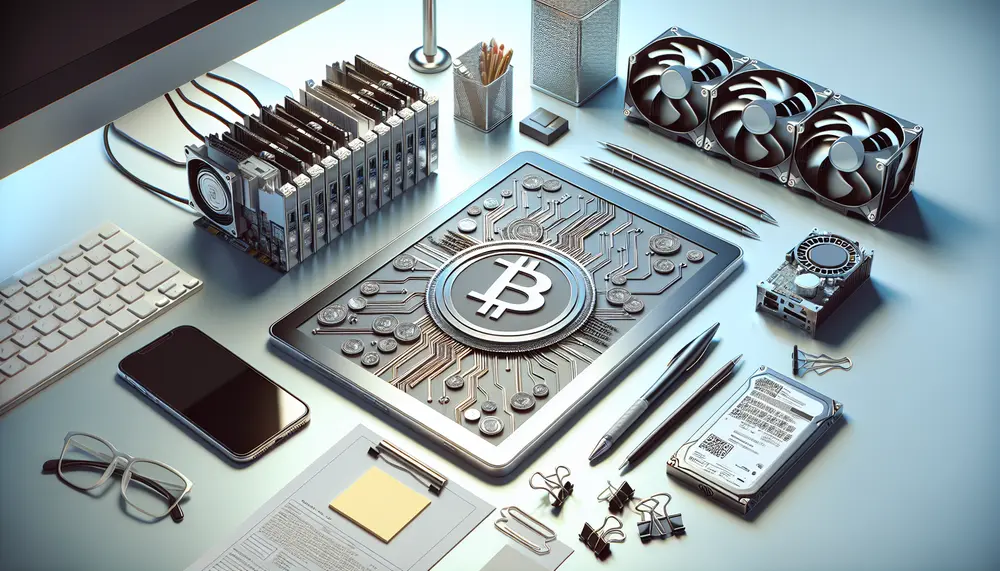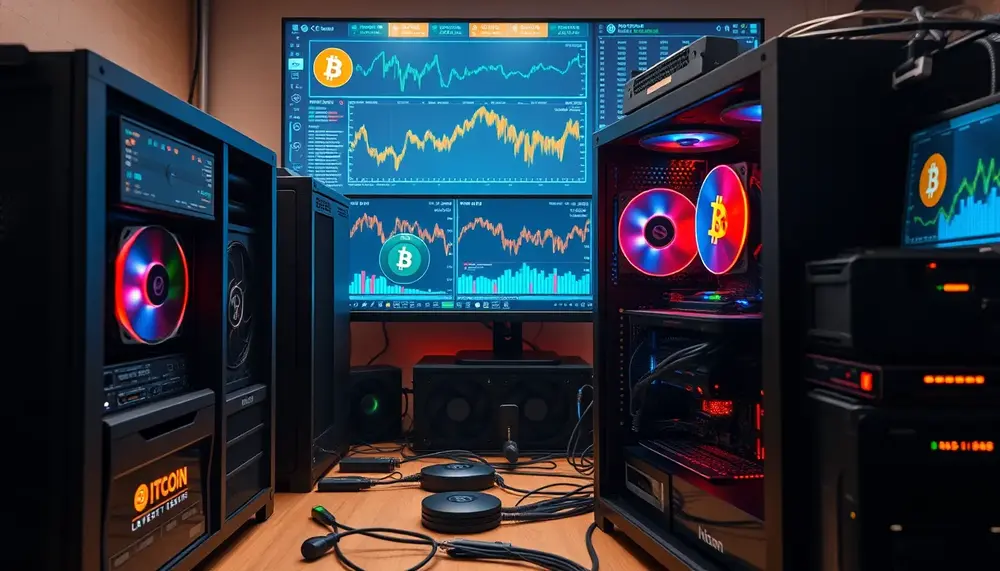Digital wallet
Digital wallet
What is a Digital Wallet?
A digital wallet is a modern, software-based system that securely stores the users' payment information and passwords for multiple payment methods and websites. By using a digital wallet, users can make purchases easily and quickly with near-field communication (NFC) technology. They can also create stronger passwords without the worry of having to remember them.
Digital Wallet in the Context of Bitcoin Mining
In the context of Bitcoin mining, a digital wallet takes on a significant role. It's not just a tool for online buying and trading. It is your financial hub where mined Bitcoins are stored and managed. Bitcoin miners, after successfully solving a block in the blockchain, receive their reward in Bitcoins. These Bitcoins are then stored in the miner's digital wallet.
Types of Digital Wallets
There are several types of digital wallets. Some operate on desktops, some on mobile devices, and others in an offline mode for added security. For online transactions, web-based wallets are popular. However, for Bitcoin mining, hardware wallets or desktop wallets are often preferred because they offer increased security.
How does a Digital Wallet Work?
A digital wallet works by storing your Bitcoin addresses and private keys in a secure way. A Bitcoin address is like a bank account number, letting other people send you Bitcoins. A private key, on the other hand, is like your online banking password, which lets you access and control your funds. Remember, in the world of Bitcoin Mining, the safety of your digital wallet is paramount. If your private keys are lost or stolen, you lose access to your mined Bitcoins.
Choosing a Digital Wallet
When choosing a digital wallet, consider factors such as security, ease of use, and compatibility with different devices. Some digital wallets are specifically designed for Bitcoin mining, offering features that help you manage your mined Bitcoins better.
Conclusion
A digital wallet is an essential tool for anyone involved in Bitcoin mining. It's the safe where you store your hard-earned Bitcoins. So, understanding what a digital wallet is and how to use it wisely is key to managing your digital assets.
Blog Posts with the term: Digital wallet

This guide provides a comprehensive overview of setting up an Ethereum mining rig, covering essential components like GPUs and motherboards, as well as key concepts such as Proof of Work (PoW) and hashrate. By the end, readers will understand how...

USDT, or Tether, is a stablecoin pegged to the US Dollar and issued by Tether Limited through fiat collateralization, ensuring each token is backed by real-world assets. It plays a crucial role in cryptocurrency trading due to its stability and...

Trust Wallet is a versatile digital wallet for managing cryptocurrencies, including mining pool earnings directly from your phone. By joining reputable mining pools and enhancing security measures like two-factor authentication, users can safely increase their chances of earning crypto rewards...

Litecoin mining involves earning LTC through computational work, and withdrawing these rewards requires understanding wallet compatibility, transaction fees, minimum withdrawal amounts, and security. Successfully transferring Litecoin from a mining pool to your personal wallet necessitates setting up a compatible wallet,...

This guide provides a comprehensive walkthrough for executing a Pepe mining withdrawal, covering essential steps such as understanding the process, setting up a secure wallet, reaching the minimum withdrawal limit of 12,500,000 PEPE on platforms like Unmineable, and initiating the...

GPU-free mining allows individuals to mine cryptocurrencies using their computer's CPU instead of expensive graphics cards, making it an accessible entry point for beginners interested in participating sustainably and learning about the crypto world. While not as fast or efficient...

USDT Wallet Mining allows users to earn USDT (Tether) through cloud-based solutions without needing expensive hardware or deep technical knowledge. This guide explains how to choose a reliable wallet, download a mining app, create an account, connect your wallet, start...

The article explores the introduction of crypto mining from an Urdu perspective, emphasizing its importance in making technology accessible to millions who speak the language by breaking down complex digital concepts into understandable terms. It delves into how cryptocurrency and...

Free crypto mining sites allow users to mine cryptocurrencies without upfront costs by leveraging cloud-based solutions, making them accessible and reducing the barrier to entry. To choose a reliable platform, consider factors like reputation, ease of use, security measures, transparency,...

XRP, developed by Ripple Labs, cannot be mined using a GPU due to its consensus mechanism and pre-mined supply; however, alternatives like mining other cryptocurrencies and exchanging them for XRP exist. Understanding these differences is crucial for anyone considering entering...

USDT ERC20 mining refers to earning rewards using USDT through methods like liquidity mining and staking, rather than traditional cryptocurrency mining. This involves providing USDT to decentralized exchanges or locking it in smart contracts on DeFi platforms to earn transaction...

Crypto mining is the process of using powerful computers to solve complex puzzles, validating transactions on a blockchain and ensuring security and decentralization; it involves competition among miners who are rewarded with new cryptocurrency coins for their efforts. This essential...

Crypto mining in New Zealand is attractive due to its cool climate, renewable energy sources, and stable political environment. This guide covers the basics of crypto mining, types of hardware (ASIC vs. GPU), and steps for setting up a mining...

Bitcoin mining is a process that validates transactions and adds new blocks to the blockchain, rewarding miners with new bitcoins while requiring specialized hardware like ASICs. Mining pools help individual miners by pooling resources for more consistent rewards, but profitability...

